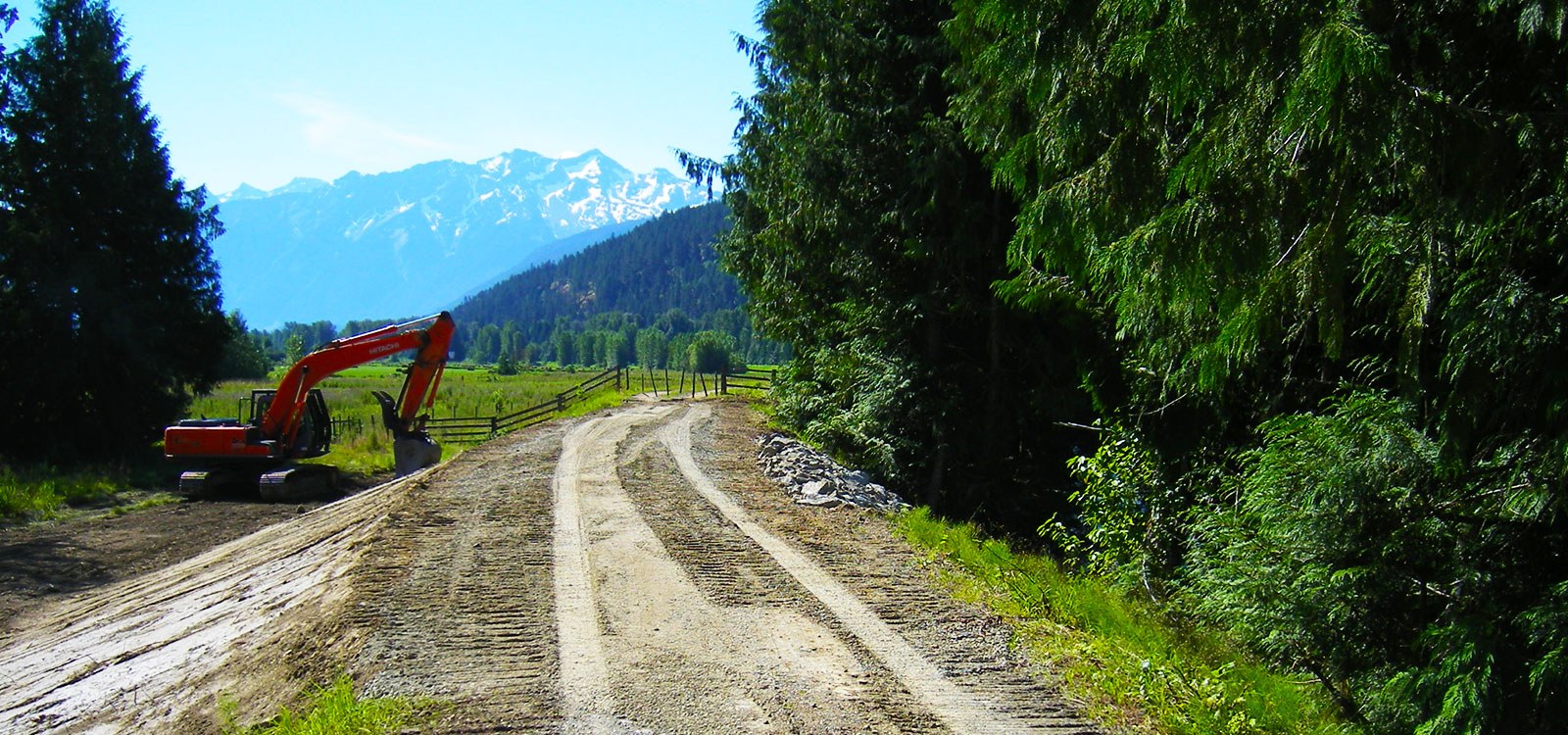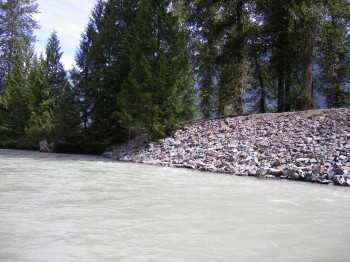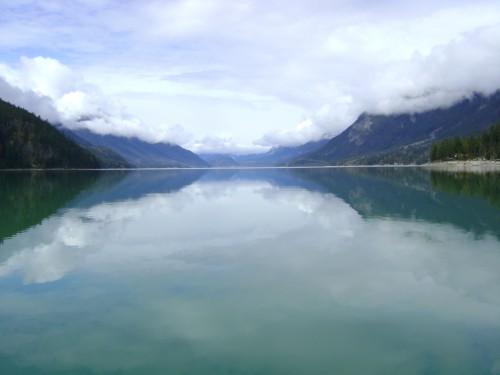Rip Rap Bank Protection
Historically, creeks and rivers in the Pemberton Valley meandered from one side of the valley to the other. This is a natural process that can occur suddenly or over a long period of time.
Movement or realignment of river flow patterns can occur as result of log jams, gravel deposits, erosion or large flood events.
Rip Rap is rock that has been placed along a dyke or river bank to stabilize the course of a river by reducing bank erosion. Although rip rap is very durable it is susceptible to large floating debris, ice, erosion and sometimes vegetation. Life expectancy of rip rap is subject to the quality of rock, quality of the original construction and maintenance.
Maintenance and Monitoring of Rip Rap
The PVDD inspects the condition of rip rap throughout the year. Inspections can be carried out from the river bank or dyke and at least once a year from a boat. Any loss or movement of rock is closely inspected. Sometimes trees rooted in rip rap can cause damage when they fall dislodging their root ball and the rip rap. Once water has breached rip rap significant damage and loss of land can occur over a short period of time.
Deficiencies in rip rap are typically repaired during low flows unless considered an emergency. The PVDD periodically removes vegetation from rip rap in critical areas if it is considered threatening. Wide spread removal of vegetation on rip rap is not feasible nor environmentally responsible/permissible. Most of the repairs to rip rap are relatively small and are intended to keep rip rap continuous and free of voids. It is largely a proactive approach that is considered to have the least amount of environmental impacts as well as being cost effective.





